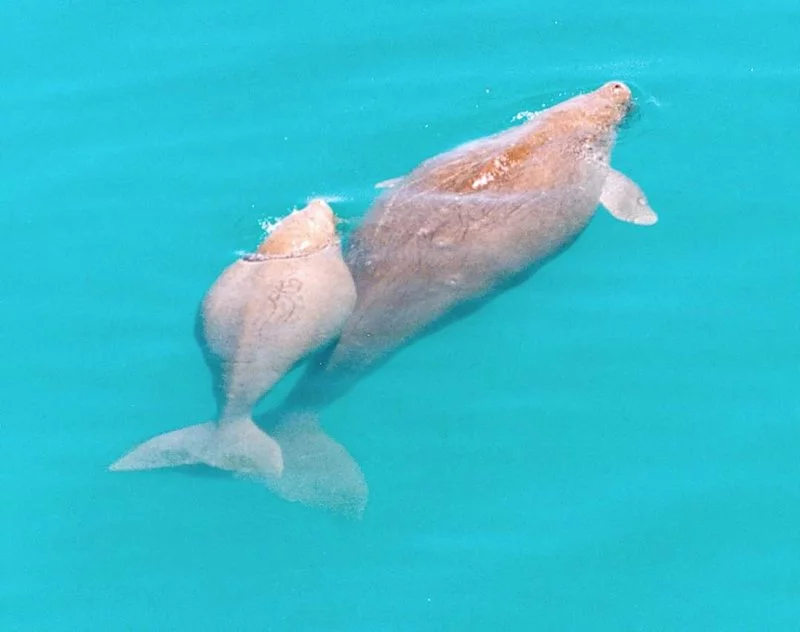Whitsunday Dugongs
Here at the Whitsundays we have a very special mammal living in our area, the Dugong or more commonly known as the 'sea cow;. Dugongs are the only herbivorous mammal in the ocean. Grazing on a huge 45 kilograms of sea grass a day, but they can be a little picky, only eating about 5 types of sea grass. There are unique marine animal species that you can come across with while snorkelling in the Whitsundays Islands but spotting a Dugong might be one of the most amazing experiences! It is not that easy!
Dugongs can weigh up to 500 kilograms with a skeletal structure of 150 kilograms. They need these heavy, dense bones to keep themselves on the bottom of the ocean making it easy for them to graze on the sea grass using very little effort. Because dugongs are negatively buoyant they like to graze in shallow waters so it is easier for them to reach the surface for a quick breath before going back to eating. The maximum amount of time they can hold their breath for is around six minutes. These animals live in the warm coastal waters of Australia, East Africa, Thailand and Indonesia, the largest population being off the coast of Western Australia. Although they were not always so abundant.
Dugongs were almost hunted to extinction mostly for the oil in their body. It would be sent off to Europe and was used in cosmetics, skin oils, lamp oil and fine machine oil. The hunting was stopped in 1965, Only aboriginal people are permitted to still hunt dugongs.
The life span of a Dugong is around 75 years. They are closely related to elephants, so they have long lives and pregnancies. The pregnancy is 15 months, they will give birth to one calf at a time weighing around 30 kilograms and half a meter long. The calf will stay with it’s mother for around four years. For the first few months purely surviving on its mothers breast milk then slowly transitioning to the sea grass. The calf will drink it’s mothers milk for the full four years it is with it’s mother, when the mother thinks the calf is big enough to leave she has the ability to turn her milk sour to start weaning the calf. Eventually it will leave it’s mother to start it’s own life. The mother is ready to have another calf almost straight after she has weaned her last.
The main predator dugongs have is the tiger shark, although fully grown healthy dugongs aren’t usually prayed on, mainly because of their shear size. They also have a very tough skin on their back that can turn hard as rock if they feel threatened making it almost impossible for a shark to bite through unless they are able to access the underside of the dugong. The only time this can really happen is if they are young, old, sick, wounded or sleeping.
A sleeping dugong can be vulnerable but they have a special trick, they literally sleep with one eye open and half of their brain stays active. Having one side of their brain active reminds them to breath every few minutes and sleeping with one eye open watching for any dangers.
Dugongs have moved from being endangered to protected which means the species is on the rise, which is great news for our dugongs and the ocean.

